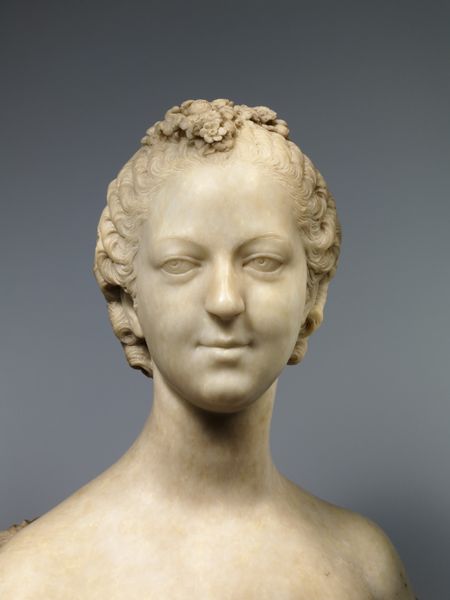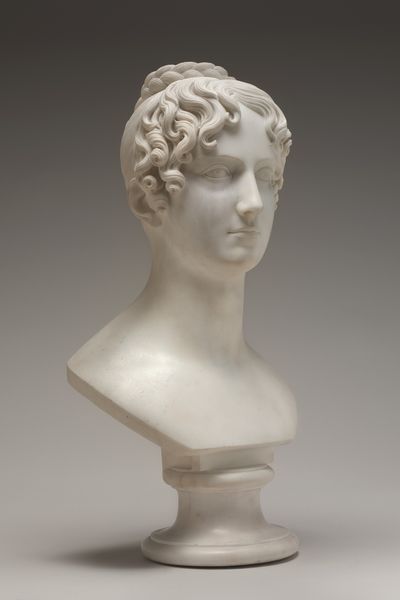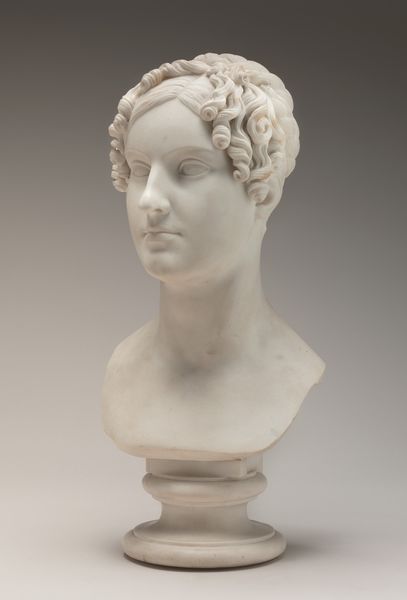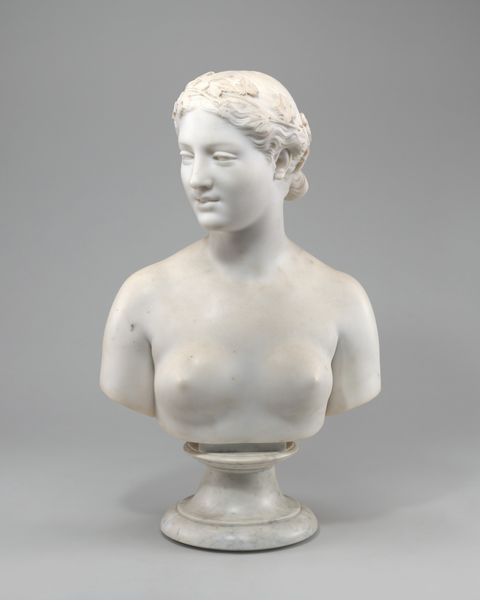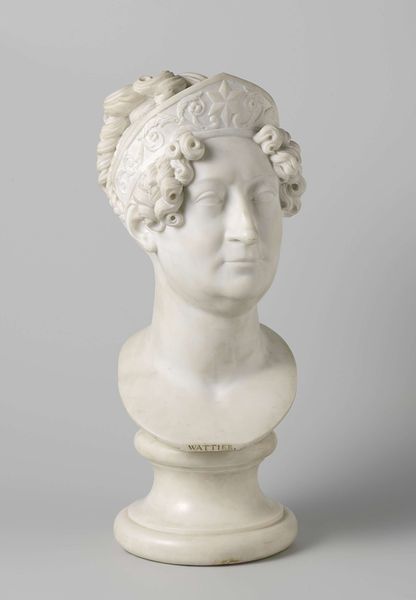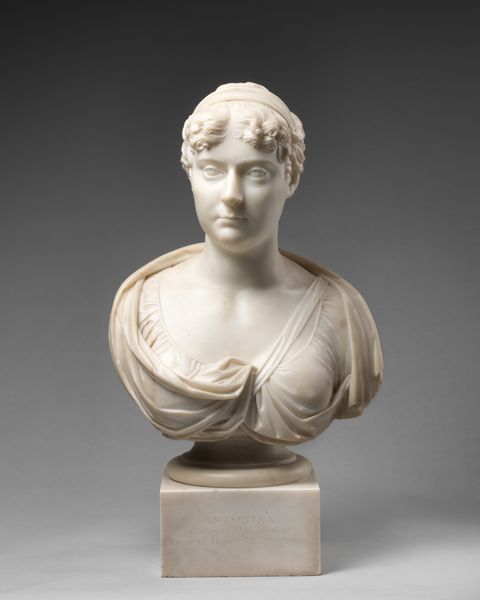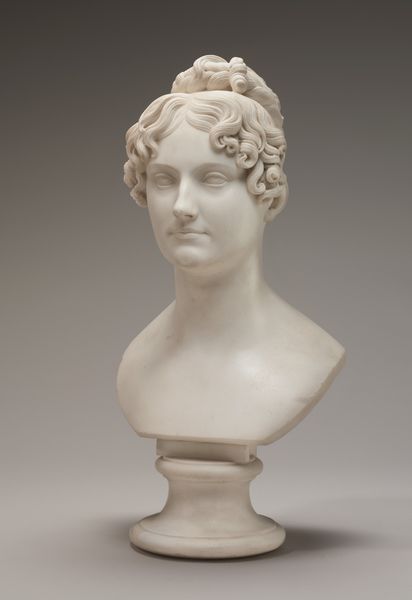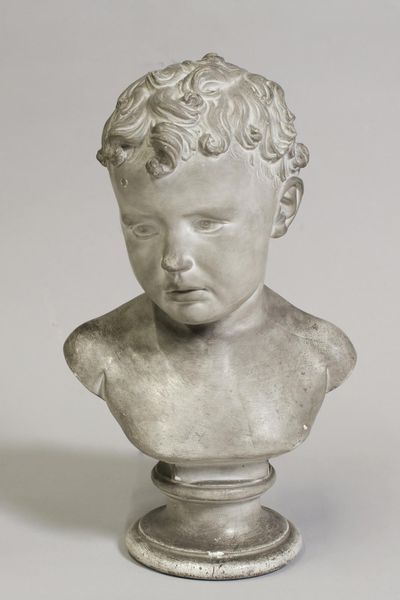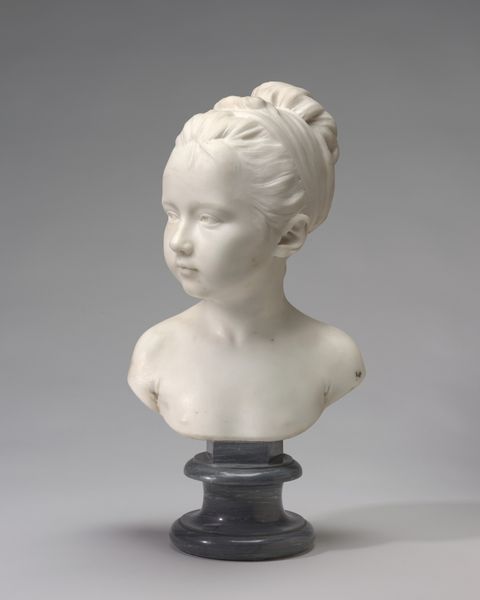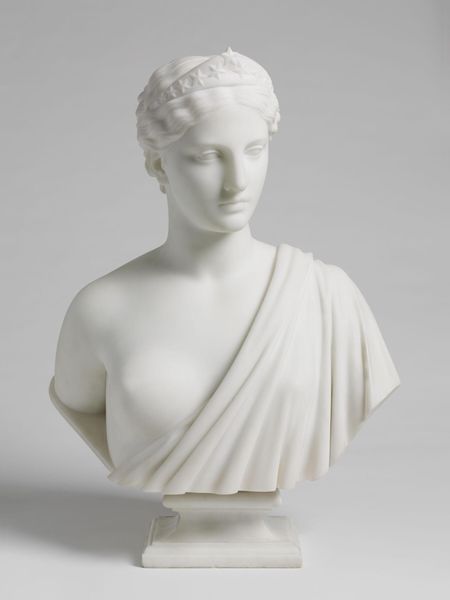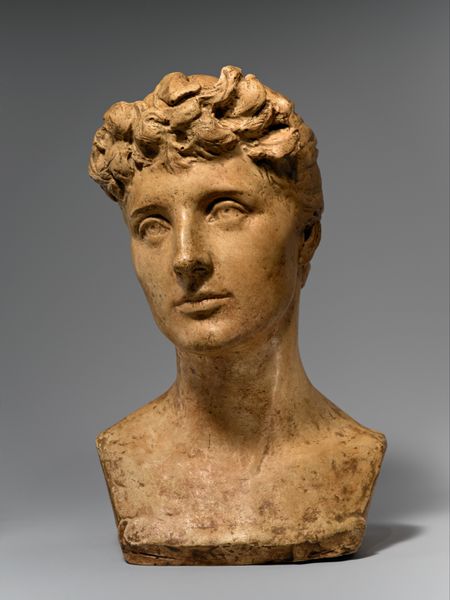
sculpture, marble
#
figuration
#
sculpture
#
marble
#
italian-renaissance
#
realism
Dimensions: overall: 34.7 x 29.8 x 16.1 cm (13 11/16 x 11 3/4 x 6 5/16 in.)
Copyright: National Gallery of Art: CC0 1.0
Curator: Look at the gentle downturn of the eyes on Antonio Rossellino's marble sculpture, The Young Saint John the Baptist, dating from around 1470. There is a poignant melancholy about this portrait bust. Editor: There is, a sense of downward movement, like the saint is lost in introspection. The light pools so beautifully on the slope of his brow and cheek, but notice the rather dense arrangement of the curls atop his head. This creates an almost palpable weight. Curator: Saint John, even in youth, carried a weighty destiny. He is often portrayed in art as a young ascetic, a symbol of repentance, and a precursor to Christ, bearing the knowledge of impending change. Editor: Indeed, this sculptural study of the human form and devotional sentimentality is a perfect distillation of the Renaissance. Consider the surface quality, how the artist achieved such texture and implied motion, so many soft curves and angles. Curator: His downturned gaze evokes contemplation and hints at his prophetic burden. The rough drapery he wears suggests humility and a rejection of worldly riches—elements crucial to understanding his symbolism as a figure bridging the Old and New Testaments. We must also acknowledge that sculptures like this often adorned private chapels in homes as a token of their spiritual views. Editor: That makes a lot of sense. It becomes more than just an aesthetic object, a focal point for faith. Now, notice that marble’s milky, translucent quality. Curator: It allows the face to seem to glow from within, almost as though lit by the spirit. Knowing its symbolic significance enhances its visual appeal even more. The representation, then, is always more than just form. Editor: You’ve changed my mind; maybe that initial sense of ‘weight’ I mentioned is intentional, a symbolic rendering that works quite successfully. A burden, not a blunder, if you will! Curator: Well, that's the beauty of diving into cultural contexts – art always contains a wealth of hidden meanings. Editor: Absolutely, and appreciating Rossellino's technique encourages me to further understand art's significance within a larger network of shared ideals.
Comments
No comments
Be the first to comment and join the conversation on the ultimate creative platform.
